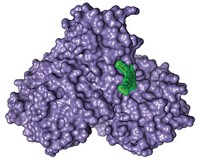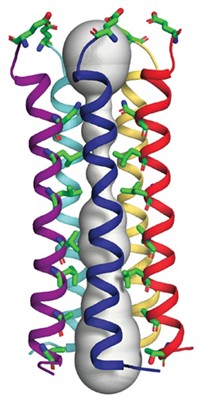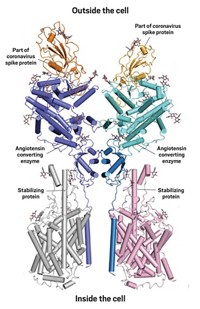Advertisement
Grab your lab coat. Let's get started
Welcome!
Welcome!
Create an account below to get 6 C&EN articles per month, receive newsletters and more - all free.
It seems this is your first time logging in online. Please enter the following information to continue.
As an ACS member you automatically get access to this site. All we need is few more details to create your reading experience.
Not you? Sign in with a different account.
Not you? Sign in with a different account.
ERROR 1
ERROR 1
ERROR 2
ERROR 2
ERROR 2
ERROR 2
ERROR 2
Password and Confirm password must match.
If you have an ACS member number, please enter it here so we can link this account to your membership. (optional)
ERROR 2
ACS values your privacy. By submitting your information, you are gaining access to C&EN and subscribing to our weekly newsletter. We use the information you provide to make your reading experience better, and we will never sell your data to third party members.
Biological Chemistry
Signaling Sighted
First structure of a G protein-coupled receptor with its G protein solved
by Carmen Drahl
December 19, 2011
| A version of this story appeared in
Volume 89, Issue 51

COVER STORY
Signaling Sighted
For the first time, researchers this year obtained an atomic-resolution crystal structure of a G protein-coupled receptor (GPCR) together with its G protein partner (C&EN, Aug. 1, page 9; Nature, DOI: 10.1038/nature10361). Given the central role of GPCRs in molecular signaling, the new view showing how a receptor activates a G protein has implications for both fundamental biochemistry and drug design. Stanford University’s Brian K. Kobilka and the University of Michigan’s Roger K. Sunahara led the effort to solve the X-ray structure of the β2 adrenergic receptor with its G protein. They harnessed antibodies from llamas, tailored a crystallization matrix for the membrane proteins, and used specialized detergents to keep the complex stable. With the structure in hand, “instead of targeting drugs to the extracellular surface of the receptor, it may be possible to target drugs to the receptor-G protein interface,” said Christopher G. Tate, a crystallographer at England’s MRC Laboratory of Molecular Biology. The researchers also used electron microscopy (Proc. Natl. Acad. Sci. USA, DOI: 10.1073/pnas.1113645108) and hydrogen-deuterium exchange mass spectrometry (Nature, DOI: 10.1038/nature10488) to examine the interaction (C&EN, Oct. 3, page 34). Taken together, the team’s results suggest the receptor kicks off signaling by engaging the N-terminus of the G protein, tugging on it, and interfering with the region of the G protein that binds the β phosphate of the nucleoside guanosine diphosphate, triggering its release, Sunahara said.






Join the conversation
Contact the reporter
Submit a Letter to the Editor for publication
Engage with us on Twitter